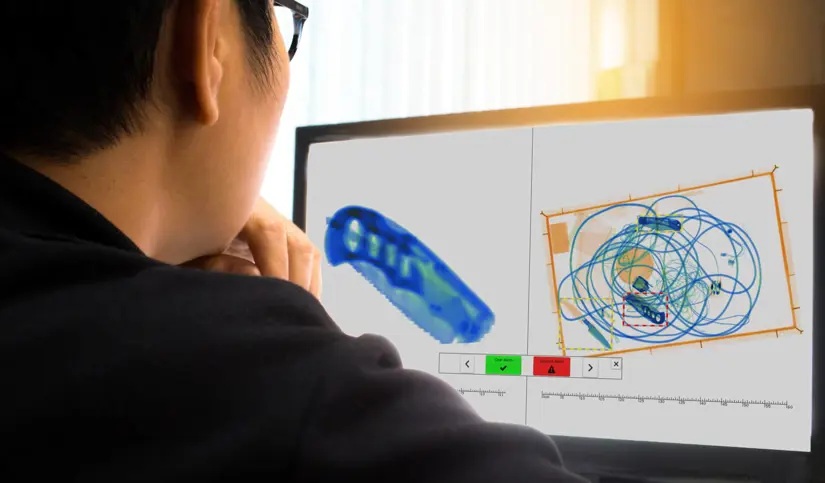Two years ago we spoke with Smiths Detection Software Engineer, Geert Heilmann about Deep learning at Smiths Detection and which benefits it offers for automatic object recognition. Our developments in this area have progressed considerably since then and we have met with Dr. Philipp Fischer, Chief Software Scientist AI & Machine Learning to give us an update.
Q: What role does deep learning play in producing object recognition algorithms?
A: Deep learning is all about ‘training’ a computer to automatically recognise patterns and shapes based on many given examples. At Smiths Detection, this process has been very successfully used to develop algorithms which can enable conventional X-ray scanners to detect objects such as weapons, knives, batteries and other dangerous or prohibited items from 2D images.
Although I have been actively involved in the deep learning revolution in computer vision, I continue to be amazed how simple bits of maths can form enormously sophisticated and powerful algorithms. Our latest and very exciting breakthrough will enable true, volumetric object recognition using all available 3D data, so that we can look inside items and not just through them.
Q: Tell us more about the new volumetric approach
A: With an increasing number of security systems now generating 3D images, the next key step was to build on the existing technology to produce an algorithm based on 2D projections and be suitable for computed tomography (CT) scanners. The results of this R&D are already out in the field helping to uncover threats.
Our next development in object recognition was to create a 3D volumetric model. It proved a challenging project as 3D deep learning research is still fairly new territory and often only focused on medical applications. In addition, leveraging the sheer volume of data produced for 3D images demands a significant level of computing power. Nevertheless, we have succeeded in producing an effective prototype algorithm.
Q: Are the test results encouraging?
A: We have been achieving very high detection rates in a number of categories. To produce reliable algorithms and accurate detection test results, high-quality training and test images with complex diversity are essential. So it is important to be careful when comparing rates from different systems as some results may be based on very simple tests or the same objects used to train the algorithm and will therefore inevitably be somewhat optimistic.
Q: How significant are the benefits?
A: Although the initial, 2D projection-based method offers a faster solution that can currently run on cheaper hardware, we believe it is the volumetric approach which will transform object recognition and deliver huge benefits, as threats cannot be hidden or blocked by other benign items.
In addition, we use a deep learning segmentation algorithm that generates voxel-accurate images with the shape of the detected object precisely outlined in 3D. The very fine-grained results enable the complete background around the suspect item to be removed for clearer inspection.
These advances in object recognition will continue to improve safety and reduce pressure on straining resources. Before too long, we may well find that the detection of explosives, weapons and other threats is completely automated with operators focusing on secondary checks.

